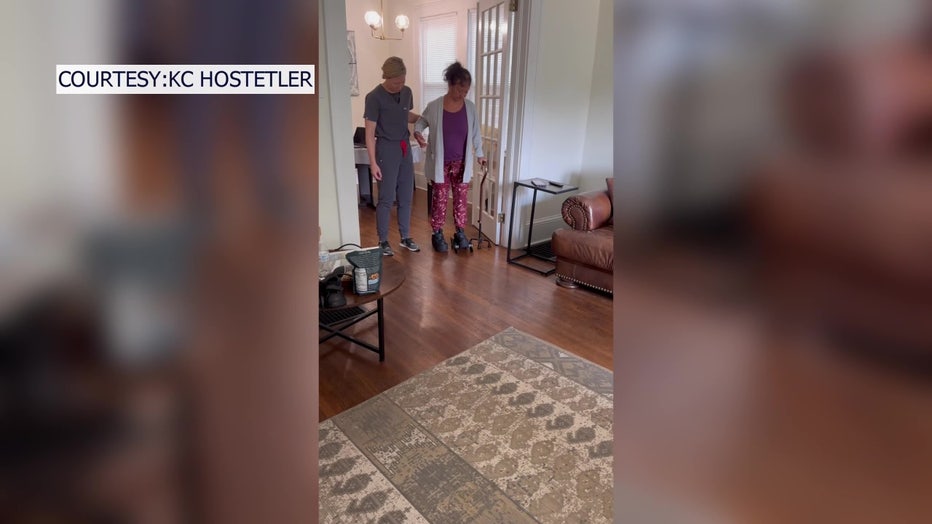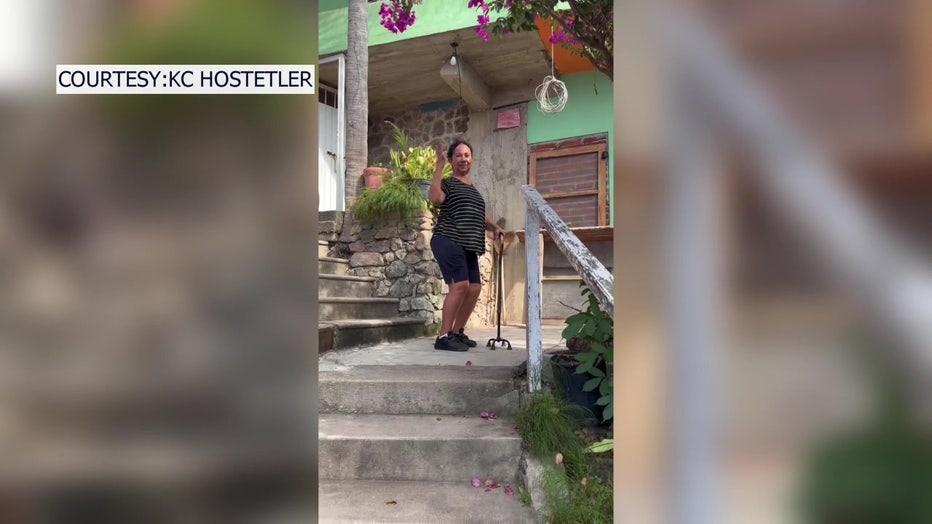Stroke patients see progress with USF professor’s stroke therapy shoe

USF professor invents stroke therapy shoe
The iStride device mimics walking on a treadmill. According to USF professor Kyle Reed, it helps stroke patients learn to walk better.
TAMPA, Fla. - A newly published study on a stroke therapy shoe shows that patients made great strides in relearning how to walk using the device, and a University of South Florida professor is behind the invention.
One of the patients was Maria Magdalena Valencia Juares of Mexico. Also known as Elena, she suffered a stroke in 2021 and could not leave her rural home in Guadalajara with more than 100 stairs.
"Since the stroke, she had nearly no mobility, like her ability to walk was extremely limited," said KC Hostetler, one of Elena’s daughters. "By the time I got to her, she'd been isolated for a year. She was just really, she was in a really bad place."
Her family went looking for help, coming across the I-Stride device, an invention by USF professor Kyle Reed.

"This is the iStride device. It’s a device that’s worn by someone who’s had a stroke to help them learn to walk better," said Reed.
The stroke therapy shoe mimics walking on a treadmill, using strings.
"It actually destabilizes you, and so when you’re wearing it makes you not want to be on your healthy foot, which makes you want to go to your impaired side," said Reed.
READ: Go behind the scenes of Tampa General Hospital’s nationally recognized transplant center
Reed worked with Moterum Technologies on several studies with the shoe, the latest funded by the National Institutes of Health.
"We’ve actually had a paper published last month that looked at the one-year follow-up and found that even one year later, the people who went through the study are continuing to have good gait outcomes," said Reed, adding that he visited Elena while she was a part of the study. "Moterum was actually running the study. So, when I got there, she had been on the shoe for about two weeks."
He saw the progression to get Elena back on her feet one step at a time.

Elena does not speak English, so her daughter KC translated for her.
"Before she got there, she wasn't sure that she would ever walk again. So being able to walk and be around her family and her friends and being able to get down to the community and see them and be a part of that community has been wonderful. And she feels much better," translated Hostetler for Elena.
Stroke specialists said the way they treat stroke patients has changed.
READ: TampaWell Garden and Pharmacy opens
"Stroke in the old days had a negative connotation. Oh, you had a stroke, nothing can be done. There’s no treatment, there’s no rehab. That has fundamentally changed," said Dr. Karl Kasischke, the Comprehensive Stroke Center Medical director for AdventHealth Tampa.
Kasischke said reprogramming the affected side is important, and a shoe like the iStride can help.
"It will provide an incentive for the patients to actively work at home. It provides an incentive for the stroke and the research community," said Kasischke.

As Elena went through her rehab using the stroke therapy shoe, she stopped using her cane, walked up at 100-plus steps to her house in Mexico, and is dancing again.
"It’s been really nice to see it having impact and really helping people," said Reed.
Reed said he is working with Moterum Technologies to get the shoe mass-produced and into patients’ hands. The goal is for patients to use the shoe at home for about 30 minutes a day to help them walk, and he said they hope to roll it out later this year.

